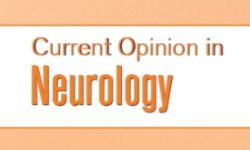
“Several lines of evidence point to the potential role of the endocannabinoid system in female sexual functioning. These include results from studies describing the subjective effects of exogenous cannabinoids on sexual functioning in humans and the observable effects of exogenous cannabinoids on sexual functioning in other species, as well as results from studies investigating the location of cannabinoid receptors in the brain and periphery, and the effects of cannabinoid receptor activation on neurotransmitters implicated in sexual functioning. While these lines of research suggest a role for the endocannabinoid system in female sexual functioning, no studies investigating the relationship between concentrations of endogenous cannabinoids (i.e., arachidonoylethanolamide [AEA] and 2-arachidonoylglycerol [2-AG]) and sexual functioning have been conducted in any species.
AIM:
To measure circulating endocannabinoid concentrations in relation to subjective and physiological indices of sexual arousal in women (N = 21).
METHODS:
Serum endocannabinoid (AEA and 2-AG) concentrations were measured immediately prior to, and immediately following, viewing of neutral (control) and erotic (experimental) film stimuli in a repeated measures design. Physiological sexual arousal was measured via vaginal photoplethysmography. Subjective sexual arousal was measured both continuously and noncontinuously. Pearson’s correlations were used to investigate the relationships between endocannabinoid concentrations and sexual arousal.
MAIN OUTCOME MEASURES:
Changes in AEA and 2-AG concentrations from pre- to post-film and in relation to physiological and subjective indices of sexual arousal.
RESULTS:
Results revealed a significant relationship between endocannabinoid concentrations and female sexual arousal, whereby increases in both physiological and subjective indices of sexual arousal were significantly associated with decreases in AEA, and increases in subjective indices of sexual arousal were significantly associated with decreases in 2-AG.
CONCLUSIONS:
These findings support the hypothesis that the endocannabinoid system is involved in female sexual functioning, with implications for furthering understanding of the biological mechanisms underlying female sexual functioning.”
https://www.ncbi.nlm.nih.gov/pubmed/22462722
https://www.jsm.jsexmed.org/article/S1743-6095(15)33996-5/fulltext










 “Migraine is a common, highly disabling disorder. Its treatment involves acute and preventive therapy. Many of available preventive medications are not well tolerated, which results in poor compliance and limited effectiveness.
“Migraine is a common, highly disabling disorder. Its treatment involves acute and preventive therapy. Many of available preventive medications are not well tolerated, which results in poor compliance and limited effectiveness.